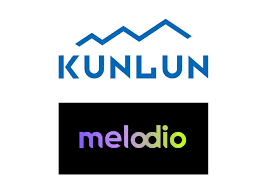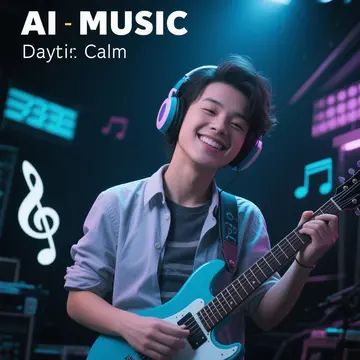Suno has quickly become one of the most popular AI music platforms in 2025, allowing users to generate full-length songs—including vocals and lyrics—with a single text prompt. But what many creators and researchers want to know is: Does Suno use a diffusion model?
The short answer is yes—but there’s more to it than that.
Suno combines the power of diffusion models with transformer-based architectures to create realistic, coherent music faster than older systems like OpenAI Jukebox. In this deep-dive, we’ll explain how Suno’s architecture works, why it uses diffusion, and how it compares to other AI audio generators in terms of speed, sound quality, and control.

What Is a Diffusion Model in Music AI?
Before we explain how Suno uses it, let’s get clear on what a diffusion model is.
Originally developed for high-resolution image generation (like in Stable Diffusion), diffusion models learn how to reconstruct clean data from noisy inputs. In music generation, these models typically operate in the spectrogram domain—a visual representation of sound—and learn to transform random noise into structured, high-quality audio.
Key benefits of diffusion in audio:
Natural-sounding textures
High fidelity output
Faster sampling than autoregressive models
In short, they’re ideal for music because they can generate smooth, realistic sound waves from noise in a controlled, iterative way.
Yes—Suno Uses Diffusion Models for Audio Quality
Suno’s architecture is hybrid, meaning it uses both diffusion and transformer models.
Here’s how the system works:
Prompt Processing via Transformers
Suno first takes your text prompt (e.g., “a sad indie rock song about leaving home”) and parses it with large transformer models that understand lyrical content, genre intent, and structure.Lyrics and Song Structure Generation
Using a transformer decoder, Suno creates a full song structure, including:Lyrics
Verse/chorus boundaries
Genre-appropriate style elements
Melody and Harmony Composition
The system generates a latent representation of the melody and musical phrasing. At this stage, the transformer is still doing most of the planning.Audio Synthesis Using Diffusion Models
This is where diffusion kicks in. Suno uses latent diffusion models to generate high-quality spectrograms, which are then converted into actual sound using a neural vocoder. The diffusion model ensures the audio sounds clean, expressive, and natural—even with synthetic vocals.Final Rendering
The complete waveform is reconstructed and played back—usually within 30 to 60 seconds, depending on the complexity.
Why Not Just Use Transformers?
You might wonder: if transformers can generate music, why bring in diffusion models at all?
While transformer-based models are great for symbolic tasks (like generating lyrics or musical events), they struggle with high-resolution audio due to the massive size of raw audio data.
Diffusion models offer:
Higher fidelity audio with fewer artifacts
Faster synthesis speeds than autoregressive audio generation
Better control over audio realism and dynamics
In fact, Mikey Shulman (Suno’s CEO) publicly acknowledged in 2024 that diffusion models are central to Suno’s success, stating that:
"Not all audio is done with transformers... There’s a lot of audio that’s done with diffusion—both approaches have pros and cons.”
Real-World Implications of Suno’s Diffusion Approach
Because of its hybrid model, Suno offers a unique balance between creativity, realism, and speed.
What This Means for Users:
You get clear vocals that actually sound like human singers
Song structure feels intelligent and musically coherent
The final output is radio-ready quality, even for complex genres like pop, trap, or orchestral
How Suno Compares to Other AI Audio Generators
| Feature | Suno | Udio | OpenAI Jukebox |
|---|---|---|---|
| Uses Diffusion? | ? Yes | ? Yes | ? No (uses autoregressive) |
| Transformer Integration | ? (lyrics + structure) | ? (structure + styling) | ? (across audio hierarchy) |
| Audio Quality | ????☆ | ????☆ | ??☆☆☆ |
| Speed of Generation | Fast (~30–60 sec) | Medium (1–2 mins) | Very Slow (hours) |
| Control Over Structure | Moderate | High | Low |
| Public API or Open Source | ? No | ? No | ? Yes (research-only) |
FAQ: Does Suno Use a Diffusion Model?
Q1: What exactly is Suno generating with diffusion?
Suno uses diffusion models to generate spectrograms of music, which are then converted into audio waveforms using a vocoder.
Q2: Can I tell that Suno uses diffusion just by listening?
Not directly—but the high clarity of vocals, smooth transitions, and lack of robotic artifacts are strong signs of diffusion-based generation.
Q3: Why does this matter for musicians and creators?
Because diffusion allows Suno to sound more human and less “AI-made”—making it usable for demos, releases, and even sync licensing.
Q4: Are there open-source alternatives to Suno with diffusion models?
Yes. Projects like Riffusion, Dance Diffusion, and AudioLDM offer open-source diffusion-based audio generation. However, they require technical setup and aren’t as polished or fast as Suno.
Q5: Can I use Suno commercially?
As of 2025, Suno allows commercial use under certain plans, but be sure to check their terms of service for licensing clarity.
Conclusion: Suno’s Diffusion-Driven Model Is the Future of AI Music
While OpenAI Jukebox was groundbreaking in its time, it’s Suno that has pushed AI music into the mainstream. By combining the precision of transformers with the sonic richness of diffusion models, Suno gives everyday creators the power to generate complete songs with studio-like quality in seconds.
Yes—Suno does use a diffusion model. And that’s exactly why its music sounds as good as it does.
In a world of fast, high-quality, AI-driven music tools, Suno stands out not just for what it creates—but how it creates it.
Learn more about AI MUSIC








